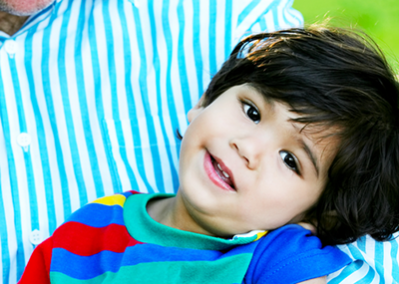Cerebral Palsy is a physical disability that affects movement and posture. It is a life long condition that does not generally get worse. It is due to damage to the developing brain either during pregnancy or after birth.
Cerebral palsy affects people in different ways and can affect body movement, muscle control, muscle coordination, muscle tone, reflex, posture and balance.
The symptoms vary from person to person, depending on the area of the brain that is damaged. It is important to consider each person on an individual basis. People with cerebral palsy may experience uncontrolled or unpredictable movements, muscles can be stiff, weak or tight and in some cases people have shaky movements or tremors. People with severe cerebral palsy may also have: difficulty swallowing & breathing, poor head and neck control, poor bladder and bowel control, difficulty eating and have dental and digestive problems.
People with cerebral palsy may also have a range of associated physical and cognitive issues. These may include:
- Inability to walk
- Inability to talk
- Vision impairment
- Intellectual disability
- Epilepsy
- Experiencing pain
There are four types of cerebral palsy:
- Spasticity – 70 – 80%of people with cerebral palsy have spasticity, which means that muscles appear stiff and tight so as they try to move, certain muscles contract. This usually affects posture and hand function.
- Dyskinetic– This condition affects body movements through unintentional, uncontrollable extra movements. This is increased with excitement or nervousness.
- Ataxia – is characterised by shaky movements. It affects balance and sense of positioning in space. People with ataxia usually have difficulty in walking and making controlled movements with hands and feet and hence they appear clumsy and uncoordinated.
- Plegia – Quadriplegia: movement of both arms and legs are affected, and usually the muscles of the trunk, mouth and face, Diplegia: movement of legs are affected, and to a lesser extent the arms, Hemiplegia: the arm and leg on one side of the body are affected.
1 in 2 people with cerebral palsy have an intellectual disability. Generally, the more severe the physical disability, the more likely it is that they will have an intellectual disability. This is not always the case though, and each person has to be treated individually.
Programming Considerations
- Many people with cerebral palsy may need assistance with lifting, toileting, showering, dressing and at mealtimes.
- They may tire easily and poor circulation means that they will get cold quickly and require appropriate clothing.
- Activities or equipment may need to be modified to enable a person with cerebral palsy to participate as independently and successfully as possible. Some people may be in a wheelchair so games may be altered- i.e. for volleyball, everyone is seated.
- Use equipment with links to tactile options such as porcupine balls with added sensory appeal.
- Make allowances for two staff where activities need to be tried – eg: surfing, head out of the water and two staff to help maintain the person on the board.
- The individual may need 1:1 support, so make allowances for this in staffing numbers if necessary.
- Activities may take longer than usual to complete so always allow adequate time.
Strategies for Inclusion
- Encourage a participant to do as much as they can by themselves and allow adequate time for tasks to be completed.
- Participation, independence, and choice making are the important factors when participating.
- Be aware of movements that the person may use to communicate – eg: kick left leg if saying no, smile for yes.
Behaviour Management Issues
- Intellectually no modification is required.
- Watch for frustration and modify activities accordingly to make them accessible for the whole group.
(Source – Cerebral Palsy Alliance)
Further information
Cerebral Palsy Alliance – www.cerebralpalsy.org.au

